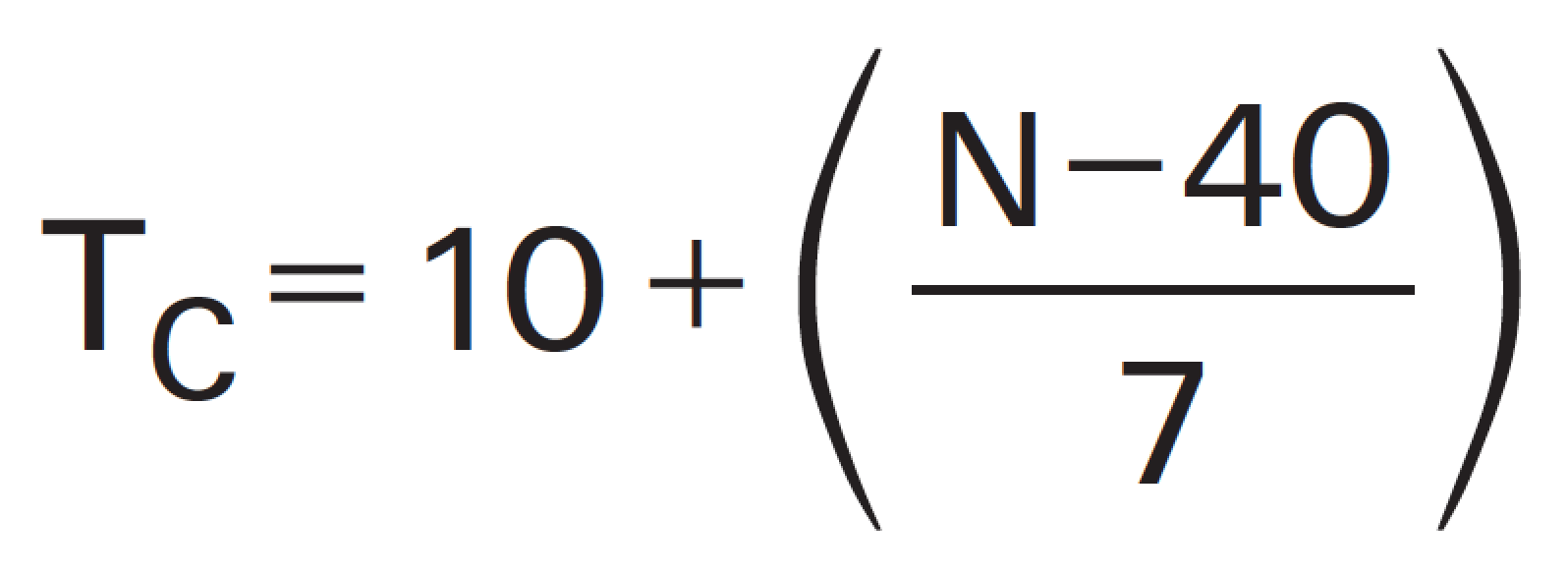A Minor History Of / Odd Sympathy
All together now
Joshua Foer
“A Minor History Of,” a column by Joshua Foer, investigates an overlooked cultural phenomenon using a timeline.
1665
Lying sick in bed and looking up at two of his newly invented pendulum clocks hanging on the wall above him, the Dutch physicist Christiaan Huygens notices something strange. Inexplicably, though the two clocks are located at opposite ends of the wall, their pendulums swing in perfect synchrony, as if magically linked. Huygens rouses himself out of bed and attempts an experiment. He releases the two pendulums from different positions and watches, awestruck, as they fall back into synch. He observes the clocks for hours on end, moving them about his house, placing a bureau between them, putting them in different rooms, setting them on the backs of chairs. Perplexed, he pens a letter to the Royal Society of London announcing his discovery of an “odd kind of sympathy.” He suspects that the pendulums somehow impart a force on each another through the common wall beam to which both are attached. It will take three and a half centuries before his theory can be experimentally confirmed.

1680
The Dutch physician Engelbert Kaempfer, on a voyage down the Meinam River in Siam, records one of the earliest Western accounts of the coordinated flashing of Asian fireflies: “A whole swarm of these insects, having taken possession of one Tree, and spread themselves over its branches, sometimes hide their Light all at once, and a moment after make it appear again with the utmost regularity and exactness, as if they were in perpetual Systole and Diastole.” The synchronized flashing was a scientific mystery. When Philip Laurent writes about the phenomenon in the journal Science in 1917, he argues that “for such a thing to occur among insects is certainly contrary to all natural laws,” and suggests that it is not the fireflies that flicker in unison, but the observer’s eyelids. Today, scientists have come to understand that the coordinated flashing of fireflies is an example of the same sort of “odd sympathy” that caused Huygens’s clocks to link up. When conditions are right, even things as mindless as pendulums and fireflies can join together in perfect concert, as if directed by a single conductor. Steven Strogatz, a Cornell mathematician who studies this phenomenon, known as “coupled oscillation,” writes that “the tendency to synchronize is one of the most pervasive drives in the universe.”
1850
The “pasilalinic-sympathetic compass,” or snail telegraph, is the misguided invention of a charismatic French occultist named Jacques Toussaint Benoit. Benoit becomes convinced that any two snails that had once mated remain forever in sympathetic contact, no matter the distance between them. Touch one, and its mate ought to move. Based on this principle, Benoit devises a pair of contraptions consisting of twenty-four snails glued to the bottom of a bowl, each representing a different letter of the alphabet. Each snail’s mate is affixed, with a corresponding label, to a receiving device that can be installed anywhere in the world. “Space was not considered by snails. Place one in Paris, the other at the antipodes, the transmission of thought along their sympathetic current as complete, instantaneous and effective as in his room on the troisième,” writes Sabine Baring-Gould in the 1889 book Historic Oddities and Strange Events. With the help of his friend Jules Allix, Benoit offers to demonstrate the snail telegraph to a noted journalist using transmitters at opposite ends of a room. “Evidently the snails were bad in their orthography,” writes Baring-Gould. “The whole thing, moreover, was a farce, and the correspondence, such as it was, was due to the incessant voyages of the inventor from one compass to the other, under the pretext of supervising the mechanism of the two apparatuses.”
1897
Just as fireflies flash in unison, crickets chirp in a shared, sympathetic chorus that is the result of coupled oscillation. The scientist A. E. Dolbear discovers that the rate of chirping is directly proportional to the outside temperature. Hence Dolbear’s Law:

where N is the number of chirps per minute and TC is the temperature in degrees Celsius. (The formula is applicable only to snowy tree crickets. The more common field cricket is a less reliable thermometer.)
1952
The Swiss psychiatrist Carl Jung introduces his theory of synchronicity, which holds that many of the experiences commonly deemed “coincidences”
are actually reflections of some deeper underlying dynamic—odd sympathies governing the universe.
As an example, Jung cites a famous case of triple-
synchronicity involving plum pudding:
A certain M. Deschamps, when a boy in Orleans, was once given a piece of plum-pudding by a M. de Fortigbu. Ten years later he discovered another plum-pudding in a Paris restaurant, and asked if he could have a piece. It turned out, however, that the plum-pudding was already ordered—by M. de Fortgibu. Many years afterwards M. Deschamps was invited to partake of plum-pudding as a special rarity. While he was eating it, he remarked that the only thing lacking was M. de Fortgibu. At that moment the door opened and an old, old man in the last stages of disorientation walked in: M. de Fortgibu who had got hold of the wrong address and burst in on the party by mistake.
1968
Martha McClintock, a twenty-year-old Wellesley undergraduate attends a scientific conference on the Whitten Effect, the habit of “unisexually grouped” female rats to synchronize their estrous periods. McClintock points out to the mostly male scientists that the same thing happens among cohabitating coeds. The scientists, none of whom have heard of “menstrual drift,” think it sounds like an old wives’ tale and ask for proof that the phenomenon really exists. McClintock takes the scientists up on their challenge, and studies 135 women in her Wellesley dorm. She finds that the average difference in starting dates of menstrual cycles of close friends decreases from 8.5 days to 5 days over the course of a school year. The immediate cause of this “odd sympathy” is apparently the exchange of odorless chemical pheromones, though it is unclear why such synchronization might have evolved. McClintock’s senior thesis is later published in the journal Nature.
1975
The human heart beat is regulated by the sinoatrial node, a cluster of about 10,000 different cells that mysteriously synchronize to create the heart’s electrical rhythm. By imagining pacemaker cells as simple oscillating electrical circuits consisting of a resistor and capacitor in parallel, mathematician Charles Peskin discovers why their beating inevitably falls into lockstep.
1997
More than 700 Japanese school children suffer epileptic seizures, vomit blood, and lose consciousness after a character in the popular television cartoon Pokemon explodes a “vaccine bomb” that causes the screen to flash rapidly for five seconds. The photosensitive seizures are the result of synchronization between the flickering light and neurons firing in the brain. Other children suffer seizures when an excerpt from the show is inexplicably re-aired on a television news report.
2000
Researchers studying audience applause discover how a single rhythmic sound can emerge out of a cacophony of individual clappers. When audiences begin to applaud, people clap rapidly for about twelve seconds before spontaneously (and unconsciously) removing every other beat, allowing each clapper to synchronize with the rest of the room. However, once the clapping slows by half, the total noise also decreases. To raise the volume, individuals tend to speed up their clapping again and slip back into asynchrony. To maintain rhythmic, coordinated applause, the audience must consciously avoid giving into this impulse. Individuals have to sacrifice their own enthusiasm for the sake of a unified sound. In their letter to Nature, the researchers write, “This perhaps explains why in the smaller and culturally more homogenous eastern European communities, synchronized clapping is a daily event, whereas it happens only sporadically in western European and North American audiences.”
2000
The Millennium Bridge opens on the River Thames, connecting St. Paul’s Cathedral to the Tate Modern. The 90,000 people who cross the bridge on its first day experience an unexpected side-to-side sway, leading authorities to close the bridge just two days after its opening. A Cambridge physicist immediately writes to the Guardian with an explanation of what had happened: “The Millennium Bridge problem … has little to do with crowds walking in step: It is connected with what people do as they try to maintain balance if the surface on which they are walking starts to move, and is similar to what can happen if a number of people stand up at the same time in a small boat. It is possible in both cases that the movements that people make as they try to maintain their balance lead to an increase in whatever swaying is already present, so that the swaying goes on getting worse.” The engineers had not anticipated that the subtle lateral motion of walkers would synchronize with the bridge in exactly the same manner as Huygens’s pendulums.
2002
A team of physicists at Georgia Tech sets out to test experimentally Huygens’s hypothesis using two pendulums and precise laser trackers. They discover that the synchronization Huygens discovered was a “mixture of luck and skill.” His two clocks, built by a leading Dutch craftsman, had virtually identical frequencies and were loaded with just the right amount of weight for an “odd sympathy” to develop.
Joshua Foer is a freelance science writer. He is working on a book about the art and science of memory, forthcoming from Penguin.
Spotted an error? Email us at corrections at cabinetmagazine dot org.
If you’ve enjoyed the free articles that we offer on our site, please consider subscribing to our nonprofit magazine. You get twelve online issues and unlimited access to all our archives.